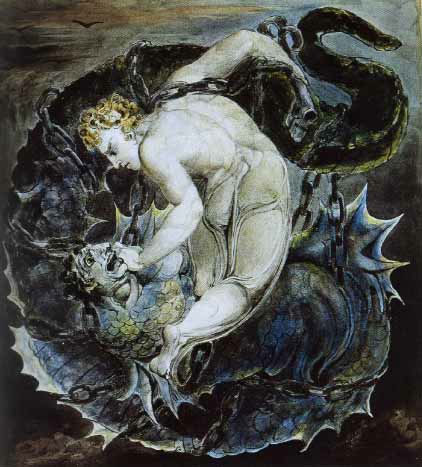Binding and Loosing

“No one can enter a strong man’s house and plunder his goods, unless he first binds the strong man. And then he will plunder his house.” (Mark 3:27 27)
A lot of commentary on the Revelation seems oblivious to the allusions to the Pentateuch (although there are many that do take it into account and are enlightening at the most obvious points). Even the “binding” of Satan in Revelation has an Old Testament background.
This act by Jesus has a “sacrificial” element, and it is only half the process. The process we observe throughout the Bible is one of binding and loosing. The “head” is bound that the “body” might be loosed. A husband is bound to one wife that she might have freedom to shine in a safe domain. Adam was bound under a single Law that Eve might not be deceived. Abram was “bound” under the Law that Sarai’s womb might be “freed.” The bondwoman and her son were cast out that the son of the freewoman might be the heir. Isaac was quite literally bound that Israel’s tribal future might be freed. Joseph was bound that Israel’s national future might be freed. Animals were sacrificed so Israel could be redeemed. Israel was bound under Moses for the sake of the nations, but they “broke loose” with the golden calf.
Moving to the New Testament, Jesus was bound by soldiers so that the apostles might be freed. Then, the apostles were bound that the Gentiles might be freed. This willing submission of the apostles to being “bound” (for the hope of Israel, etc.) is what resulted in AD70, and the binding of Satan. That is what their faithful witness achieved.
“Most assuredly, I say to you,
…..when you were younger,
……….you girded yourself (Firstfruits)
……………and walked where you wished;
……….but when you are old,
…..you will stretch out your hands,
…..and another will gird you (Atonement)
and carry you where you do not wish.”
(John 21:18)
As followers of Christ, we are bound (in prayer and fasting) that others might be freed. The idea is that Satan is bound with us, we take him to the altar (or grave, or furnace) and leave him there, while we ourselves are freed, “resurrected” along with his captives.
At the Lord’s Table, the past is bound and broken in Jesus, and the future is released, poured out as new wine.
The application in Revelation might be complicated, but the process isn’t. AD70 was the Lord’s Table played out on an imperial scale. Satan was bound in AD70 that the nations might be freed. That was when the process was begun, but it is far from over. [2]
The Revelation, indeed all the New Testament, must be expounded with reference to the processes founded in the Torah. [3]
_____________________________
[1] See also chapter 12, “Cutting Words,” in Bible Matrix II: The Covenant Key and Three Strikes.
[2] The full preterist view that Satan was not only bound but also destroyed in the first century doesn’t fit with Jesus’ analogy at all.
[3] See Newspaper Exegesis.

























